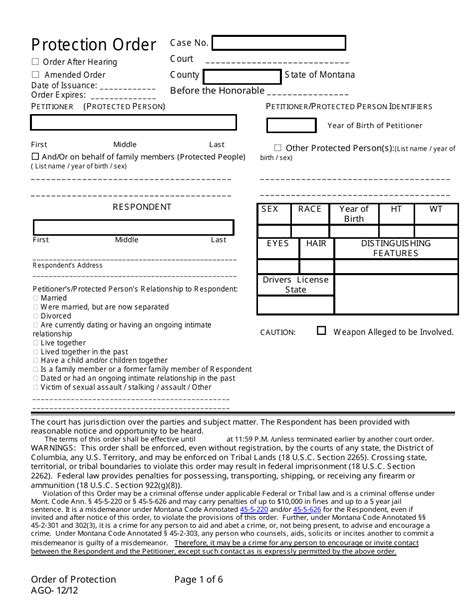Montana Protection Order: How to Get It Dismissed
Obtaining a protection order in Montana can have significant consequences, impacting your ability to own firearms, possess certain employment opportunities, and maintain relationships with family and friends. If you're facing a Montana protection order and seek its dismissal, understanding the legal process and available strategies is crucial. This article outlines the steps involved and offers insights into increasing your chances of success.
Important Note: This information is for educational purposes only and does not constitute legal advice. If you are facing a protection order, you must consult with a qualified Montana attorney immediately. The specifics of your case and the applicable laws are crucial factors in determining the best course of action.
Understanding Montana Protection Orders
Before exploring dismissal strategies, it's important to understand the basis of Montana protection orders. These orders are granted by a court to protect individuals from harm, typically involving domestic violence, sexual assault, or stalking. The petitioner (the person seeking the order) must demonstrate to the court a credible threat of harm. The order can impose various restrictions on the respondent (the person against whom the order is sought), including:
- No-contact provisions: Preventing any communication or contact with the petitioner.
- Residential restrictions: Prohibiting the respondent from approaching the petitioner's residence or workplace.
- Possession of firearms: Potentially restricting the respondent's right to own or possess firearms.
How to Get a Montana Protection Order Dismissed
Dismissal of a Montana protection order requires a strategic approach and a strong legal defense. Here are some key considerations:
1. Gathering Evidence:
This is the cornerstone of any successful dismissal attempt. You need to gather evidence that contradicts the claims made by the petitioner. This might include:
- Witness testimonies: Statements from individuals who can attest to your behavior and the lack of any credible threat.
- Photos and videos: Any visual evidence that supports your defense.
- Text messages and emails: Communication records that demonstrate a lack of threatening behavior.
- Police reports: If any incidents were reported, the police reports can provide crucial context.
2. Filing a Motion to Dismiss:
Once you have gathered sufficient evidence, you will need to file a formal motion to dismiss the protection order with the court. This motion must clearly state the grounds for dismissal and include all supporting evidence.
3. Presenting Your Case in Court:
This is where your attorney's expertise becomes critical. They will present your evidence, cross-examine the petitioner's witnesses, and argue your case before the judge. A strong presentation is key to convincing the judge to dismiss the order.
Frequently Asked Questions (PAAs)
These are common questions related to dismissing Montana protection orders, gleaned from online search queries:
What are the grounds for dismissing a protection order in Montana?
The grounds for dismissal vary depending on the specifics of the case. Generally, a judge might dismiss an order if the petitioner's claims are found to be false or unsubstantiated, if there is insufficient evidence of a credible threat, or if circumstances have changed significantly since the order was issued.
Can I represent myself in court to dismiss a protection order?
While you can represent yourself, it's strongly discouraged. Protection order cases can be complex, and legal representation is crucial to effectively present your case and protect your rights. An experienced attorney will understand the nuances of Montana law and increase your chances of success.
How long does the dismissal process take?
The timeframe for dismissing a protection order varies depending on the court's schedule and the complexity of the case. It can range from several weeks to several months.
What happens if the protection order is not dismissed?
If the protection order is not dismissed, you must abide by its terms. Violation of a protection order can result in serious legal consequences, including arrest and imprisonment.
What if new evidence emerges after the order was granted?
If new evidence becomes available after the order was granted, you can file a motion with the court to present this new evidence and request a reconsideration of the order.
Conclusion
Dismissing a Montana protection order requires careful planning, a strong legal strategy, and the assistance of a qualified attorney. Gathering compelling evidence, preparing a well-written motion, and effectively presenting your case in court are essential for increasing your chances of success. Remember, seeking legal counsel early on is critical to protecting your rights and navigating this complex legal process. Do not attempt to navigate this alone. Consult an experienced Montana attorney immediately.

